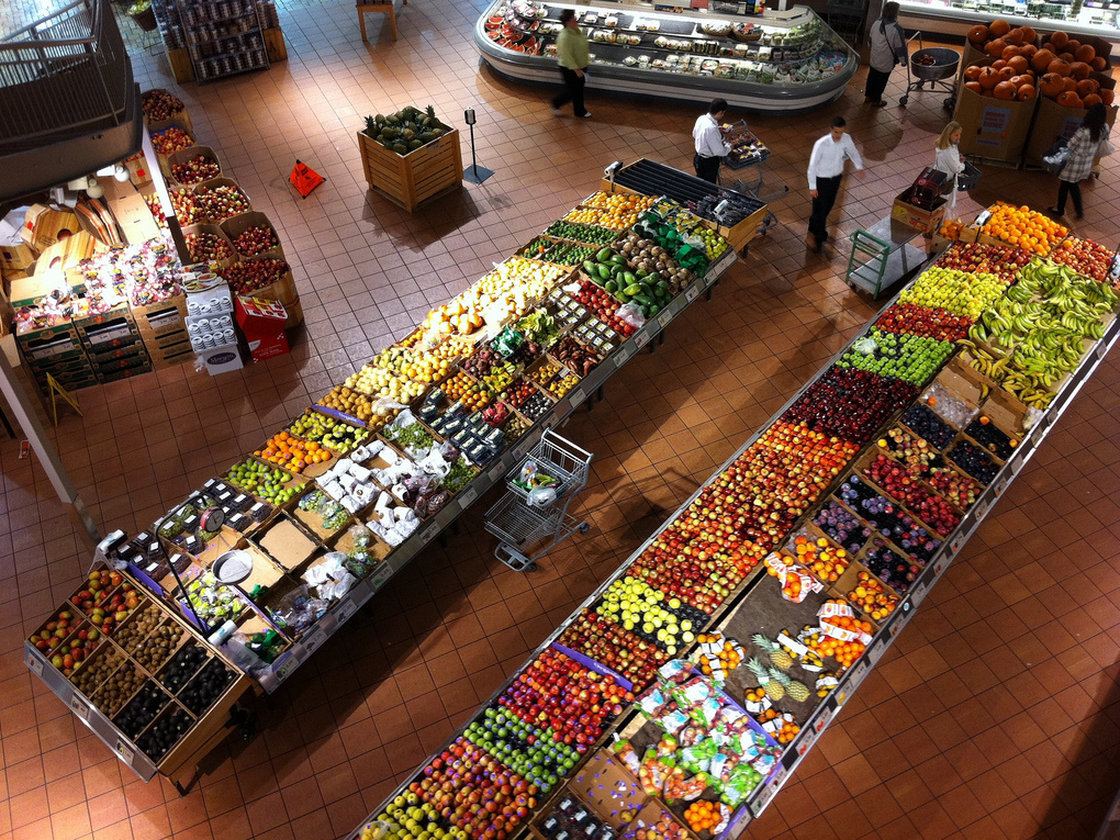
Photo: Bunnyhero/Flickr
Listen to the Story on Weekend Edition Saturday

Photo: Bunnyhero/Flickr
Listen to the Story on Weekend Edition Saturday
Post by NPR Staff, The Salt at NPR Food (9/21/13)
Here's some food for thought: One-third of the world's food goes to waste every year. In the U.S., about 40 percent of our food gets thrown out. It's happening on the farm, at the grocery store and in our own homes.
Lately, there's been a lot of talk about what to do about it — from auctioning off food that's past its prime to getting restaurants to track their waste.
Doug Rauch, the former president of Trader Joe's, is determined to repurpose the perfectly edible produce slightly past its sell-by date that ends up in the trash. (That happens in part because people misinterpret the labels, according to a report out this week from Harvard and the National Resources Defense Council.) To tackle the problem, Rauch is opening a new market early next year in Dorchester, Mass., that will prepare and repackage the food at deeply discounted prices.
The project is called the Daily Table. Here's what he shared with NPR's Scott Simon, edited for brevity.
Simon: What gave you the idea?
Rauch: It's the idea about how to bring affordable nutrition to the underserved in our cities. It basically tries to utilize this 40 percent of this food that is wasted. This is, to a large degree, either excess, overstocked, wholesome food that's thrown out by grocers, etc. ... at the end of the day because of the sell-by dates. Or [it's from] growers that have product that's nutritionally sound, perfectly good, but cosmetically blemished or not quite up for prime time. [So we] bring this food down into a retail environment where it can become affordable nutrition.
A retail environment is a store ... or a food truck or something like that?
Yeah, it's kind of a hybrid between a grocery store and a restaurant, if you would, because primarily it's going to take this food in, prep it, cook it [for] what I call speed-scratch cooking. But the idea is to offer this at prices that compete with fast food.
Since the food is past its sell date, is it safe to eat?
Absolutely. As a matter of fact, if you have a product that says "sell by Sept. 1" or "Oct. 1" and, you know, it's Oct. 2, most customers don't realize you can eat that.
Still, is it a public relations problem to get people to buy stuff that is past due?
Well, we'll see, won't we? I think that the issue here is really how you talk about it and how you educate.
For instance, food banks for years have done this. I might say, without naming the names, one of the leading, best regarded brands in the large, national, food industry — they basically recover the food within their stores, cook it up and put it out on their hot trays the next day. That's the stuff that we're going to be talking about. We're talking about taking and recovering food. Most of what we offer will be fruits and vegetables that have a use-by date on it that'll be several days out.
Well, customers nevertheless have to consume the food pretty quickly.
As you know, when it comes to bread ... we all know if you put it in the refrigerator it could last for weeks [even if it's expired]. Milk lasts for days. It all depends on the temperature of your refrigerator, frankly.
Most people don't know that, but you lose several days of shelf, whether it's in code or out of code. Or do you leave the milk out on the counter while your kids are having breakfast? There's all kinds of ways in which, if you handled it properly, you extend the life.
Is there any concern among, let's say the people who might own a Trader Joe's or some other food store today that, somehow, your places are going to be potentially underpricing them?
You'd have to ask them. But most of what we'll be selling will be fruits and vegetables, freshly prepared product, stuff that's really not brand-driven. And [we'll be doing it] in areas that, frankly, are underserved. There aren't Trader Joe's in the inner-cities in America, at least to my knowledge.
This is about trying to tackle a very large social challenge we have that is going to create a health care tsunami in cost if we don't do something about it. I don't regard Daily Table as the only solution — there are wonderful innovative ideas out there — but I certainly think it is part of and is an innovative approach to trying to find our way to a solution.
Copyright 2013 NPR.